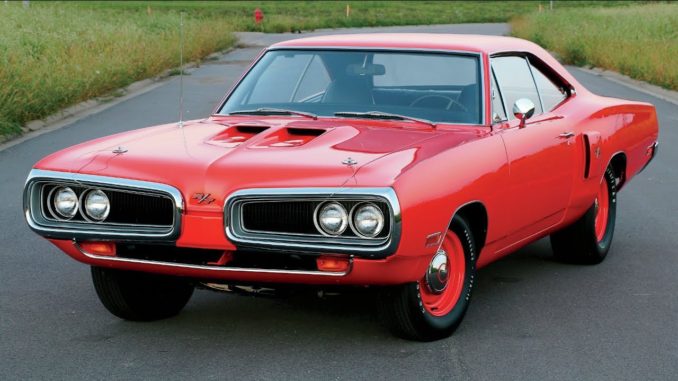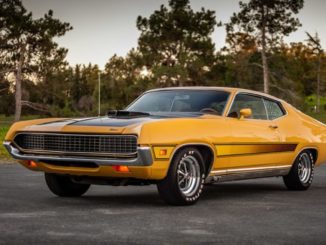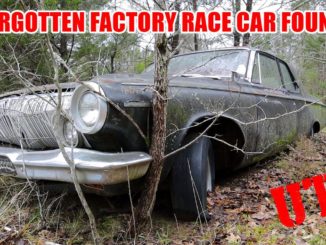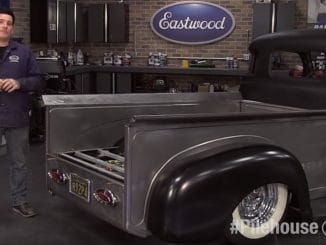
When Dodge released the 1968 model year — the mid-cycle redesign of the fifth generation Coronet — it had no idea at the time that it had created a legend. Here’s why the 1968-1970 Coronet was one of the best cars Dodge produced during its golden era…
Fifth Generation Dodge Coronet 1968-1970
The Coronet and similar Plymouth Belvedere received complete redesigns in 1968, as did the Dodge Charger, which shared the B-body platform. There was a mild facelift in 1970. Trim levels initially included the base Coronet, Coronet Deluxe, Coronet 440, Coronet 500 and Coronet R/T. The Coronet Super Bee was introduced in early 1968 as a companion to the Plymouth Road Runner. In keeping with Dodge’s position as a step above Plymouth, the Super Bee shared the Charger’s Rallye instrument cluster and the Coronet 440’s rear finish panel.
As in 1967, the 440ci RB V8 was only available in the Coronet R/T in 1968. The 426ci Hemi V8 was supposed to be limited to the R/T and Super Bee, but two 1968 Coronet 440s are known to have been built with this engine.
In mid-1969, the A12 package was introduced on the Super Bee. It included a 390 hp (291 kW) version of the 440 with three 2bbl Holley carburetors on an aluminum intake manifold, a black fiberglass lift-off hood secured with metal pins, heavy-duty suspension and 15″ steel wheels with no hubcaps or wheel covers. The hood had an integrated forward-facing scoop which sealed to the air cleaner assembly and bore a decal on each side with the words “SIX PACK” in red letters, “Six Pack” being the name used for the 6-bbl induction setup when installed on a Dodge (Plymouth went with “440 6bbl” on the A12 Road Runners). The A12 Super Bee could be had with most Super Bee options, with the exception of air conditioning and tire-wheel packages. The A12 option was a 1969-only package, but the 440 6bbl returned in 1970 as an optional engine on both the Super Bee and the Coronet R/T.
The base Coronet and Deluxe were available as 2-door coupes, 4-door sedans or station wagons. The base Coronet was dropped in 1969, leaving the Deluxe as the lowest trim level through 1970. The Coronet 440 convertible was dropped for 1968, but a 2-door coupe was added along with the 2-door hardtop, 4-door sedan and station wagon. This would remain the lineup through 1970. Coronet 500 retained its 2-door hardtop, convertible and 4-door sedan through 1970. A Coronet 500 station wagon made its debut in 1968, continuing through 1970. Simulated woodgrain trim was standard on the Coronet 500 wagon.
The Coronet R/T 2-door hardtop and convertible continued through 1970.
The Super Bee was only available as a 2-door coupe or 2-door hardtop. Chrysler did display a convertible with Super Bee stripes at car shows in 1968, but never offered it as a production model. Some enthusiasts have created “phantom” Super Bee convertibles by adding the appropriate trim and stripes to Coronet 500 convertibles.
The Dodge Super Bee was a limited-production muscle car from Dodge division produced from 1968–1971. The original Super Bee was based on the Dodge Coronet, a 2-door model only and was produced from 1968–1970. It was Dodge’s low-priced muscle car, the equivalent to Plymouth Road Runner, and was priced at $3,027. Available with Hemi engine, this option increased the price by 33% so only 125 models were sold with this engine option. The Super Bee included a heavy-duty suspension, an optional Mopar A-833 four-speed manual transmission, with high-performance tires, and a stripe (with the bee logo) wrapped around the tail. The name “Super Bee” was derived from the “B” Body designation given Chrysler’s midsized cars which included the Coronet.
A “six-pack” (three two-barrel carburetors) version of the 440 engine was added to the list mid-year. This engine was between the standard engine and the Hemi as a $463 option. The 1969 model year gave customers several engines to choose from, the base 383 hp (high performance), 440 six-pack, and the 426 Hemi V8. The 440 Magnum (4bbl) was not available as an option, it was reserved for the Coronet R/T.
In 1970, the Super Bee was given a different front end look that consisted of a dual ovaled grill that was referred to as “bumble bee wings”. Despite the new looks, the engines, as well as the “ramcharger” hood (that carried over from 1969 model), sales plummeted for the 1970 model. In 1970, Dodge also produced four Super Bee convertibles; the whereabouts of the four cars are unknown.
Portions via Wikipedia




